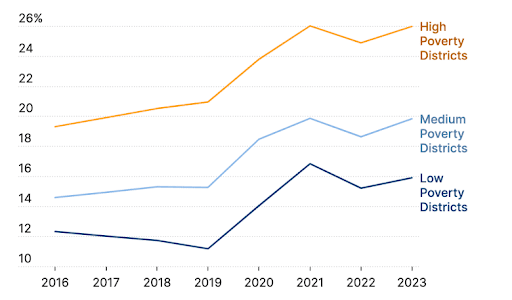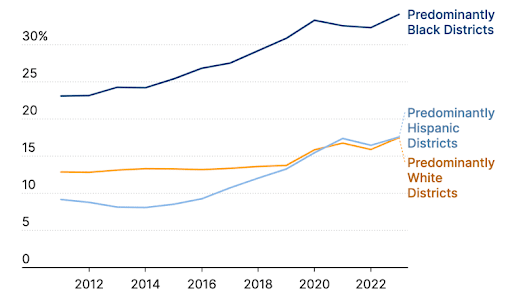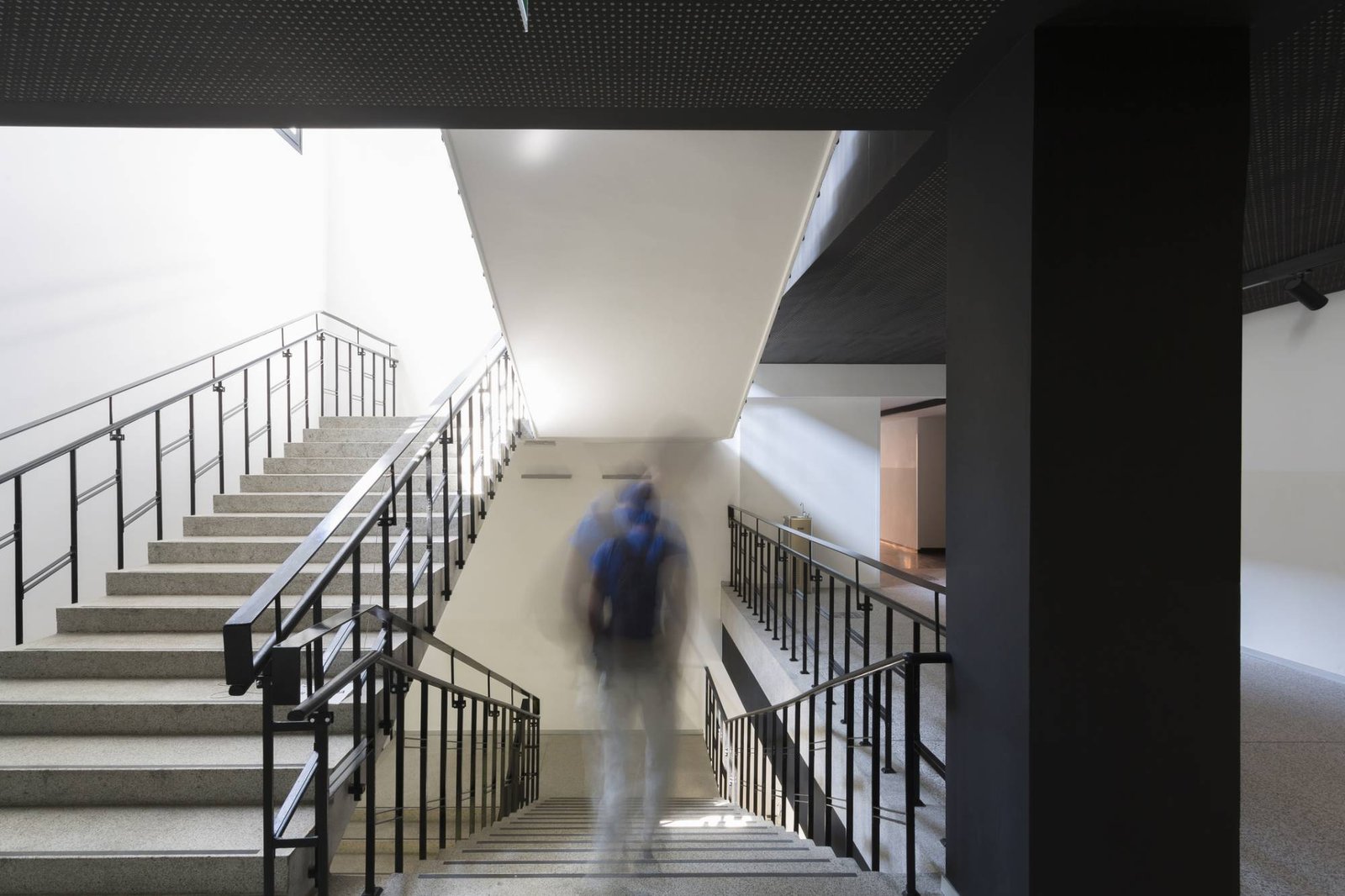Source: Brookings, “Declining public school enrollment,” August 2025
Private school enrollment flat
Before the pandemic, the share of students in traditional public schools held steady, hovering near 85 percent between 2016 and 2020. After the pandemic, traditional public school enrollment plummeted to below 80 percent and hasn’t rebounded.
The mysterious missing children account for a big chunk of the decline. But families also switched to charter and virtual schools. Charter school enrollment rose from 5 percent of students in 2016-17 to 6 percent in 2023-24. The number of children attending virtual schools almost doubled from 0.7 percent before the pandemic in 2019-20 to 1.2 percent in 2020-21 and has remained elevated.
Surprisingly, private school enrollment has stayed steady at almost 9 percent of school-age children between 2016-17 and 2023-24, according to this Brookings estimate.
I had expected private school enrollment to skyrocket, as families soured on public school disruptions during the pandemic, and as 11 states, including Arizona and Florida, launched their own educational savings account or new voucher programs to help pay the tuition. But another analysis, released this month by researchers at Tulane University, echoed the Brookings numbers. It found that private school enrollments had increased by only 3 to 4 percent between 2021 and 2024, compared to states without vouchers. A new federal tax credit to fund private school scholarships is still more than a year away from going into effect on Jan. 1, 2027, and perhaps a greater shift into private education is still ahead.
Defections from traditional public schools are largest in Black and high-poverty districts
I would have guessed that wealthier families who can afford private school tuition would be more likely to seek alternatives. But high-poverty districts had the largest share of students outside the traditional public-school sector. In addition to private school, they were enrolled in charters, virtual schools, specialized schools for students with disabilities or other alternative schools, or were homeschooling.
More than 1 in 4 students in high-poverty districts aren’t enrolled in a traditional public school, compared with 1 in 6 students in low-poverty school districts. The steepest public school enrollment losses are concentrated in predominantly Black school districts. A third of students in predominantly Black districts are not in traditional public schools, double the share of white and Hispanic students.
Share of student enrollment outside of traditional public schools, by district poverty

Source: Brookings, “Declining public school enrollment,” August 2025
Share of students not enrolled in traditional public schools by race and ethnicity

Source: Brookings, “Declining public school enrollment,” August 2025
These discrepancies matter for the students who remain in traditional public schools. Schools in low-income and Black neighborhoods are now losing the most students, forcing even steeper budget cuts.
The demographic timebomb
Before the pandemic, U.S. schools were already headed for a big contraction. The average American woman is now giving birth to only 1.7 children over her lifetime, well below the 2.1 fertility rate needed to replace the population. Fertility rates are projected to fall further still. The Brookings analysts assume more immigrants will continue to enter the country, despite current immigration restrictions, but not enough to offset the decline in births.
Even if families return to their pre-pandemic enrollment patterns, the population decline would mean 2.2 million fewer public school students by 2050. But if parents keep choosing other kinds of schools at the pace observed since 2020, traditional public schools could lose as many as 8.5 million students, shrinking from 43.06 million in 2023-24 to as few as 34.57 million by mid-century.
Between students gone missing, the choices some Black families and families in high-poverty districts are making and how many kids are being born, the public school landscape is shifting. Buckle up and get ready for mass public school closures.
This story about school enrollment declines was produced by The Hechinger Report, a nonprofit, independent news organization focused on inequality and innovation in education. Sign up for Proof Points and other Hechinger newsletters.




Recent Comments